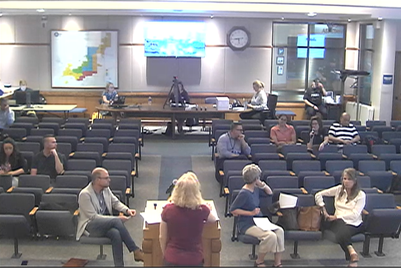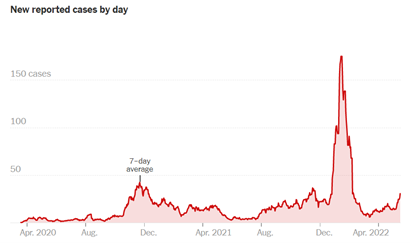*UPDATE* Broomfield Health Survey Researchers Confirm: Findings Do Not Show Oil and Natural Gas Is Causing Health Impacts
UPDATE (6/16/2022, 2:30 PM EST): The Colorado Department of Public Health and Envrionment (CDPHE) has issued a statement on the survey acknowleding the limitations of the authors’ findings:
“Surveys of this nature contribute to the scientific evidence by identifying potential public health concerns that may need further investigation, but there are limitations, as there is with all research. (As) the survey authors note, self-reported outcomes can make it difficult to assess the extent to which perceptions about oil and gas activity influence participation in the survey and responses to survey questions.” (emphasis added)
Researchers, including the University of Colorado School of Public Health’s Lisa McKenzie, whose past work has been criticized by the Colorado Department of Public Health and the Environment, presented the preliminary findings of a recent health survey conducted for the City and County of Broomfield at a town hall Thursday night to a virtually empty room.
And while the research team said the full data set for the $55,217 taxpayer-funded survey will be available to the public in coming weeks and acknowledged they have not yet had a manuscript peer-reviewed or published, CCOB’s Senior Environmental Epidemiologist Meagan Weisner also admitted:
“This study won’t tell us the cause of the symptoms, so we cannot prove causation that oil and gas emissions caused an increase in symptoms…We don’t really know the cause.”
That sentiment was further echoed by CCOB’s Department Director Andrew Valdez:
“The results of this study don’t provide us with any evidence to stop ongoing [oil and gas] operations.”
The reality is that oil and natural gas development likely isn’t responsible for reported ailments at all, as Weisner explained:
“Broomfield’s UOGD sites have some of the most rigorous best management practices in the state of Colorado.”

EID recently offered some initial perspective on the preliminary findings, but below are some additional notable explanations the researchers gave on the survey:
#1: Researchers acknowledge they did not account for Covid-19 on a survey examining respiratory symptoms.
When asked if the study included any consideration for Covid-19, McKenzie responded:
“We did not have a question whether people have Covid-19 or not on our survey…I will say during the survey period there was some Covid-19.”
That’s a significant oversight. As EID explained prior to the town hall, New York Times data show reported Covid-19 cases in Broomfield County during the time the survey was conducted (October to December 2021) were trending upward.

#2: Researchers acknowledge perception bias likely impacted survey results.
In soliciting responses for the survey, researchers were up front with respondents that they were seeking to analyze potential impacts from nearby oil and natural gas development – a disclosure that likely impacted the frequency and bias of reported symptoms. As McKenzie explained:
“We found that the level of concern really impacted our result…there were higher frequency of symptoms [among those concerned], regardless of the distance from the pad.”
Weisner also said:
“Among respondents, regardless of distance of a UOGD site, level of concern with odor, noise and air pollution impacted the frequency of symptoms reported.”
In fact, the researchers had a difficult time getting responses in general and had to send out additional post cards to solicit participation than they originally planned to just to achieve a minimum sample size. In discussing whether emissions spikes detected during CCOB’s ongoing air monitoring could be correlated to reported symptoms, Weisner explained:
“We tried to do that [apply the air quality data], we simply didn’t have enough people responding to surveys when a plume occurred, so the analysis started to fall apart… There were limitations with our analysis when we tried to go further with our air quality data.”
#3: The largest majority of respondents living within one mile of development spent less time in their homes.
In any study seeking to find the cause of potential health ailments, exposure and concentration – i.e. how much and how often a person is exposed to an environmental factor – has to be taken into account. But in the case of this study, Weisner acknowledged that the largest respondent demographic wasn’t home much at all, making the potential level of exposure from sources at home more minimal:
“Respondents living within one and one to two miles … spent less time at home each day.”
The researchers have not yet had their findings peer-reviewed or presented their results to the Colorado Oil and Gas Conservation Commission, although they said they did share them with the CDPHE.




